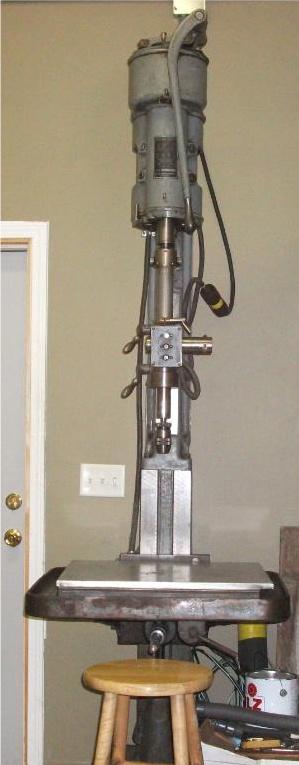-
FREE MEMBER
NO Posting or PM's Allowed

mounting pads no4T sniper?
Hi people,
My name is simon and I am from Holland.
Last week i purchased a pair of pads fore my no4 lee enfield.
I want to mount these pas on the rifle, so i can mount my No32 MK.1 scope on it.
My question is if i can just drill in de rifle? Maybe the steel of the rifle is to hard to drill?
Does anyone have got some tips for mounting the pads on the rifle?
Thanks in advance!
Kind regards, Simon
Information
 |
Warning: This is a relatively older thread
This discussion is older than 360 days. Some information contained in it may no longer be current. |
|
-
06-25-2011 02:28 PM
# ADS
Friends and Sponsors

-
Legacy Member


Simon, before doing anything I strongly suggest that you read Peter Laidler 's 4 part article on '' making up a useable no.4 sniper''. There's a whole lot more to it than just drilling/tapping the holes and screwing the pads on.
's 4 part article on '' making up a useable no.4 sniper''. There's a whole lot more to it than just drilling/tapping the holes and screwing the pads on.
Last edited by vintage hunter; 06-25-2011 at 05:02 PM.
-
-
FREE MEMBER
NO Posting or PM's Allowed

Hi Vintagehunter,
Yes I'm aware of that, but anyway thanks for the link, there was some useful information in it.
Mine enfield is in an not workable condition, so precisely centering the scope is not very necessary.
I was just wondering if i can drill into the receiver with a normal drill. Or do I have to use special tools? In the article the man speeks about a normal drill, so I assume that i can just use a normal drill?
Kind Regard, simon
-
Legacy Member


Yes, a normal driillmwill work fine.
-
-
A cobalt alloy drill bit will probably do better than a "high speed" drill bit. They're both "normal", the M42 cobalt just costs a little more and isn't as common in regular hardware stores. Any tool distributer should have them, hopefully with the "split point" feature.
-
-
Simon, you will be making a BIG mistake if you drill the holes using a hand held drill. At the rear, one of the screw holes is close to an induction hardened area and if you are drilling this by hand, the drill tip will wander off course. At the front, all of the screws have to be exact otherwise the tapered screw heads will not seat correctly in the tapered rtecesses in the pads unless the screw centres are exact. Tey can bind, tip and snap. It is up to you of course but it WILL go wrong if you don't take our advice
My advice is to find a friend who has a pillar drill
-
-
My favorite!:

Probably doesn't NEED to be this large, but the table makes such work easy. Plus you don't want to turn the bits very fast, esp. in a hardened area. Ideally, a drill jig w/ guide bushings for the bits would ensure a proper job, but you're just going for the visual, not functional. "Eyewash"
-
-
For this purpose, is a pillar drill an advantage over a mill/drill? What specific advantage does a pillar drill have over a milling machine for drilling generally? I've never used a pillar drill and so far don't see the point, this may VERY well be my ignorance on display.
-
-
No particular advantage, UNLESS you are using drill jigs, Esp. with a gang drill. Then it's easier to go from station to station- spot drill- drill- ream- tap- deburr. That's how the mfg's typically did it.
There were some good videos put up recently showing these operations done on an M1917 or '03 receiver. Will look later to see if they're still "findable".
-
Thank You to jmoore For This Useful Post:
-
So the workpiece is on a jig, with bushed or un bushed guideholes for the bit, then there is no clamping of the workpiece, just find the guide on the jig with the bit and plunge?
-















 Register To Reply
Register To Reply












